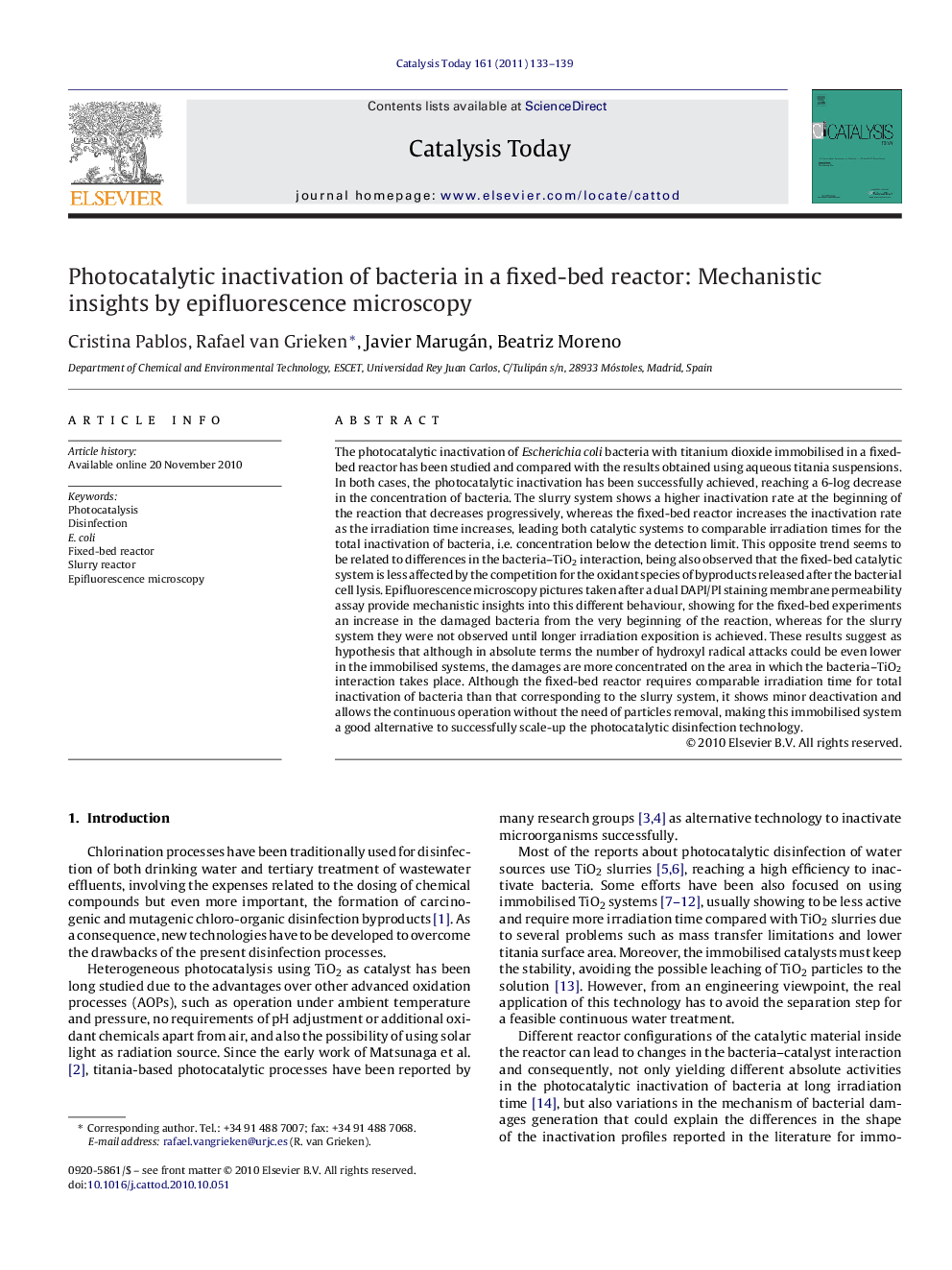| Article ID | Journal | Published Year | Pages | File Type |
|---|---|---|---|---|
| 56485 | Catalysis Today | 2011 | 7 Pages |
The photocatalytic inactivation of Escherichia coli bacteria with titanium dioxide immobilised in a fixed-bed reactor has been studied and compared with the results obtained using aqueous titania suspensions. In both cases, the photocatalytic inactivation has been successfully achieved, reaching a 6-log decrease in the concentration of bacteria. The slurry system shows a higher inactivation rate at the beginning of the reaction that decreases progressively, whereas the fixed-bed reactor increases the inactivation rate as the irradiation time increases, leading both catalytic systems to comparable irradiation times for the total inactivation of bacteria, i.e. concentration below the detection limit. This opposite trend seems to be related to differences in the bacteria–TiO2 interaction, being also observed that the fixed-bed catalytic system is less affected by the competition for the oxidant species of byproducts released after the bacterial cell lysis. Epifluorescence microscopy pictures taken after a dual DAPI/PI staining membrane permeability assay provide mechanistic insights into this different behaviour, showing for the fixed-bed experiments an increase in the damaged bacteria from the very beginning of the reaction, whereas for the slurry system they were not observed until longer irradiation exposition is achieved. These results suggest as hypothesis that although in absolute terms the number of hydroxyl radical attacks could be even lower in the immobilised systems, the damages are more concentrated on the area in which the bacteria–TiO2 interaction takes place. Although the fixed-bed reactor requires comparable irradiation time for total inactivation of bacteria than that corresponding to the slurry system, it shows minor deactivation and allows the continuous operation without the need of particles removal, making this immobilised system a good alternative to successfully scale-up the photocatalytic disinfection technology.
